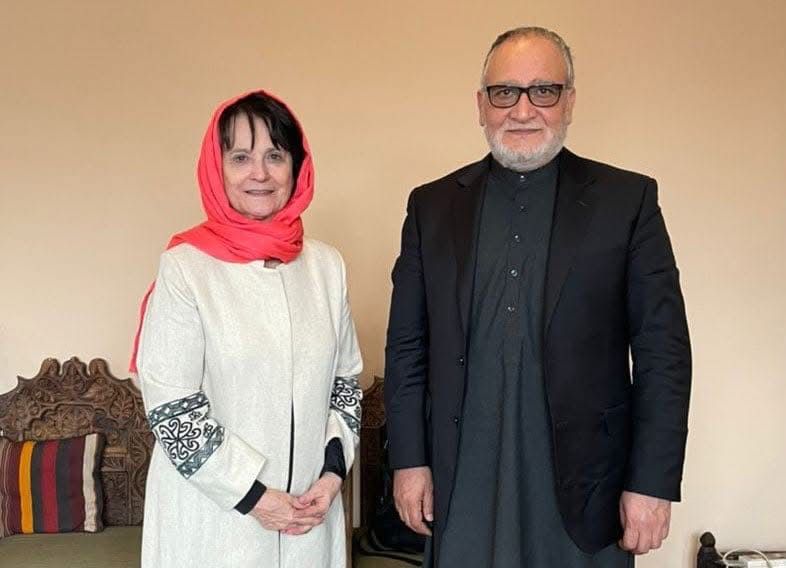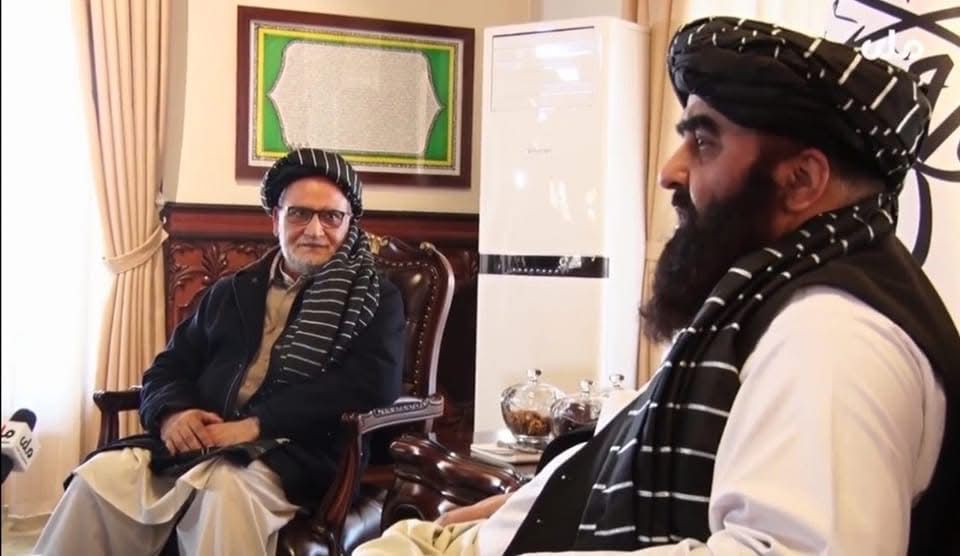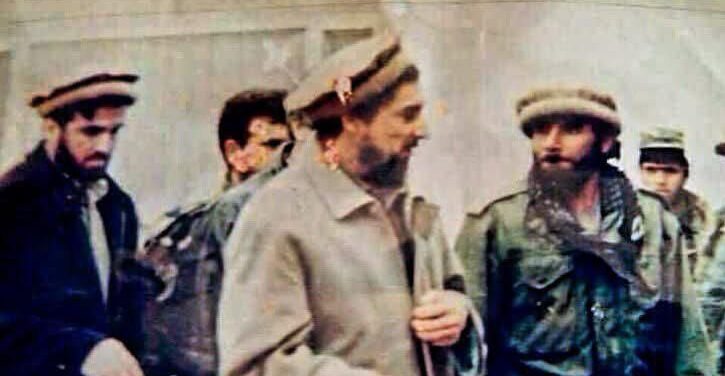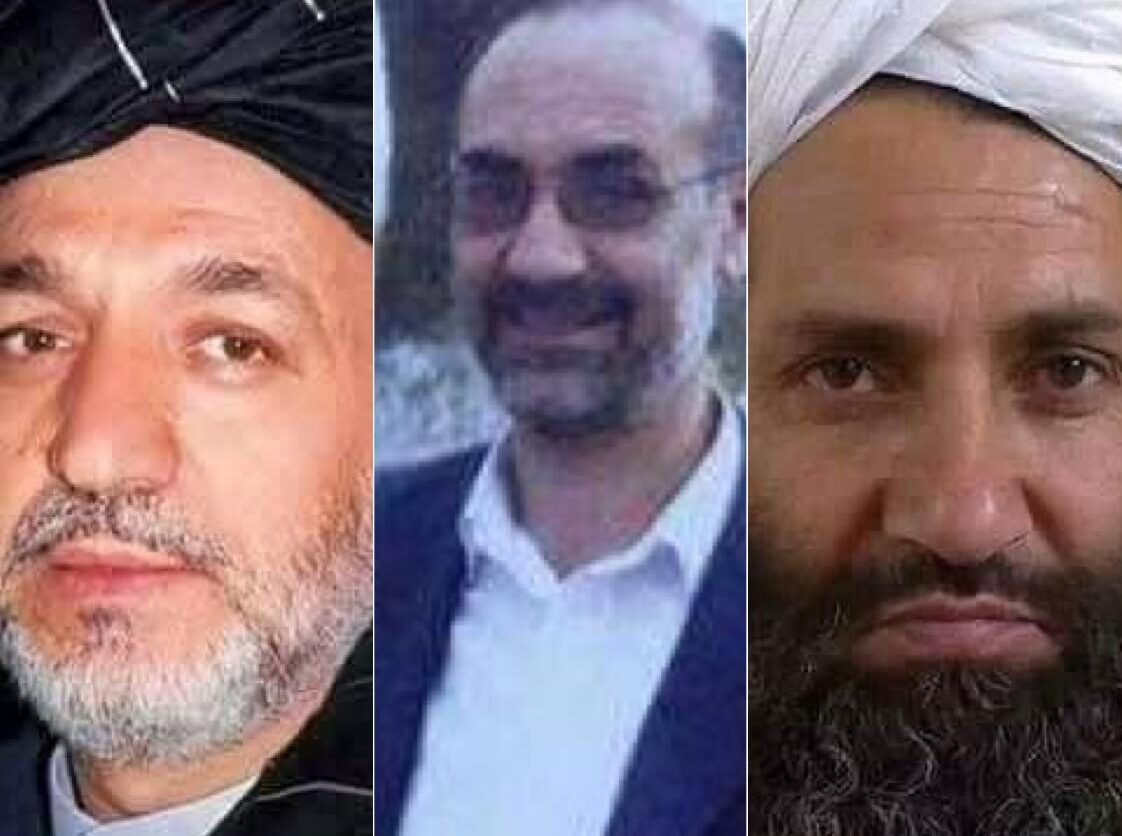
Examining the Role of a Quiet Insider in the Peace Process, the Collapse of the State, and His Return to Kabul
Arg Times
In the history of the Afghan Republic, there were figures who, though rarely seen in public, were present behind closed doors during the most important meetings and decisions. Salam Rahimi, former Chief of Staff to President Mohammad Ashraf Ghani and Minister of State for Peace, was one such figure—a man with an obscure past, a calm demeanor yet broad influence, and a puzzling reappearance on the political stage after the fall of the Republic.
This report seeks to examine, based on available information, the role of this “gray figure” in the peace talks, the collapse of the Republic, and his return to the political scene under the Taliban’s rule.
Political Background: From Mawlawi Khalis’s Hezb-e-Islami to the Presidential Palace
Before formally entering government, Salam Rahimi was a member of the Hezb-e-Islami faction led by Mawlawi Khalis—a jihadi group active in Pakistan and Afghanistan’s eastern provinces during previous decades. While in exile, he headed an NGO in Pakistan that operated in Afghanistan’s southwest and had access to international aid.
A key question emerges: Did this political–religious background pave the way for Rahimi to become a central player inside the Presidential Palace? Evidence suggests that Rahimi leveraged these connections to secure a strategic position alongside Ashraf Ghani, remaining in the president’s small circle of decision-makers until the government’s final days.
The Inner Circle: Nepotism or National Management?

From the start of the National Unity Government in 2014, Rahimi was appointed Chief of Staff to the President—a position that gave him unprecedented authority: from access to classified documents, to influencing appointments, salaries, projects, and even determining who stayed or left the corridors of power.
Reports and testimonies from individuals close to the former government indicate that many of Rahimi’s relatives, friends, and associates were appointed to high-ranking positions. Some viewed this as the growth of a “family network” within the state that paralyzed the government’s ability to confront real threats and political challenges.
The Peace Process: Policy for Peace or Preparing for Surrender?
In June 2019 Rahimi was appointed Minister of State for Peace by presidential decree. In theory, this role was meant to coordinate the peace process; in practice, many believe it became a political instrument to engineer the peace narrative and sideline critics.
Some of the central questions here include:
Why were civil society actors, women’s representatives, and critics of the peace process excluded from the official framework?
Was the process engineered to favor the Taliban?
What role did Rahimi play in shaping—or remaining silent on—the Doha Agreement?
No official documents confirming secret deals have surfaced, but the manner of the Republic’s collapse points to at least moral and political accountability for key figures like Rahimi.
Media and Soft Power Networks
Alongside his formal roles, Rahimi reportedly used a network of ostensibly non-governmental organizations to extend his influence across media, civil society, and project management.
One such body was the Coordination of Humanitarian Assistance (CHA), which outwardly engaged in humanitarian work but in practice served as a vehicle for building soft power and winning large contracts from both the government and international donors.
Media outlets such as Saba TV and Nawa Radio—managed or influenced by this network—received substantial funding and opportunities during Rahimi’s tenure. While claiming independence, critics argue these outlets largely amplified the government’s official narrative and justified the peace process.
This raises the question: Did Rahimi, using public resources, build a media–civil society empire for his own political purposes? And did these outlets play a role in misleading public opinion about the Taliban threat?
Return to Kabul: Taliban Silence or a Pre-Existing Understanding?

After the fall of Kabul in August 2021, most former officials went into exile or withdrew into silence. Rahimi, however, took a different path: in early 2022, he returned to Kabul—without hindrance, without arrest, and even appearing at meetings with senior Taliban figures such as Anas Haqqani and Amir Khan Muttaqi.
How did the Taliban allow a senior insider of the Republic to return and remain politically active? Was there a prior arrangement? Did his role in the peace process help earn their trust?
His return only deepens speculation about potential links between him and certain Taliban factions during the Republic years.
Salam Rahimi is likely to remain in Afghanistan’s political memory as “the man behind the curtain.” His influence lay not on the battlefield but in the engineering of power, peace, and political networks.
Whether he was part of a deliberate handover of the Republic to the Taliban or merely a casualty of a dysfunctional system remains uncertain. What is certain is the urgent need to investigate, question, and document the role of such figures—so that future generations understand how the Republic fell, and who, directly or indirectly, shaped its fate.
Arg Times reached out to Rahimi with questions for this report, but by the time of publication, he had not responded to our messages.



